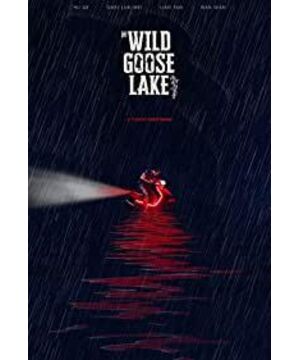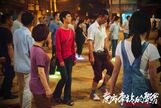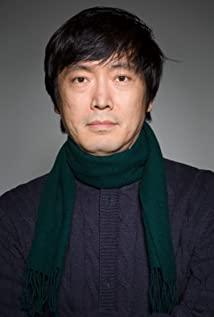Originally published in the Spring/Summer 2020 issue of Art World
The spatial coordinates of The Gathering at South Station are ambiguous. In contrast, it has a clear time coordinate - 2009, China before the two circulation/control methods of high-speed rail and WeChat were fully taken over. The "south" here is the absence of the north, the departure of Diao Yinan from the center after the filming of North China and the Northeast, and a discrete act of Chinese art film.
This separation is at odds with the local self-narratives of the younger generation of filmmakers. With the sharp shrinking of political and market space, the main position of speaking about China is no longer open to young people, even young directors like Bi Gan who are representative and have resources. Qiu Sheng, a post-80s director who is known as the representative of the "Hangzhou New Wave", has asserted that "China no longer has a myth like Jia Zhangke." Even so, self-objectifying local narratives remain richer and more open than the art films of the previous generation. Perhaps it is just a conspiracy of the increasingly rigid old European film festivals and the sixth generation of directors to say that China's main position itself is tiredly reproducing the national narrative that has failed, often as ambiguous as the laid-off lost in "Long Time" A low sigh from a veteran worker: Beijing has changed a lot.
Considering "Southern" as a straggler on the Chinese film map, not only because Diao Yinan once talked about China in "Fireworks in the White Sun" in 2014, but also because "Southern" abandoned the logic of the production of legends in that type of speech. "Fireworks in the Day" has successfully drawn a set of exquisite illustrations: serial killers use their special status as weighmen to put the broken corpses into the coal trains that are about to go to various places, and realize the "Heavenly Girl Scattering Flowers" style in one day. Throw the corpse. This vivid image pinches the main artery of the "North-South Coal Transportation", visualizing individual violence as spatial structural violence. However, the legend is always lagging behind, it cannot control the order of the existing layout. When there are only legends left in the gap between the internal and external order, there are only the self-propagation of images such as urban villages, small three, disco, bullet trains, bathing cities, etc., and the reality of China is no longer visible.
Hu Ge and Gui Lunmei, who speak Wuhan dialect, do not express Wuhan people or Wuhan character, but appear as a non-regional character. Conversely, some films that express the locality of Wuhan do not use the Wuhan dialect. Lou Ye's Wuhan maintains the same distance from the political power of the imperial capital and the commercial power of the coastal cities: Yu Hong, who fled from Beijing, could not adapt to Shenzhen, so he returned and settled in Wuhan; Wuhan in "Mystery of the Floating City" shows class differences Visual materials; Similarly, Wang Xiaoshuai's "Pan Pole, Girl" and Wang Jing's "Ten Thousand Arrows Piercing Heart" are both based on pre-modern Hanzheng Street and its characteristic "pile pole" porter. This kind of locality is usually inherent in the legend system.
Why does "South" use dialects? Perhaps a comparison can be drawn between dialect cinema and scholar Hamid Naficy's concept of "accented cinema." If the accent film corresponds to the bilingual practice of new immigrants acting on the suzerain in the economic colonial order, then the dialect film corresponds to the sublation of the orthodox world of Chinese in the internal order of "Greater China". The English title of "South" bluntly chooses the fictional place name Wild Goose Lake - Wild Goose Lake, a heretical world far away from the center, a dead corner of "three no-brainers", a demolition area, full of vacant houses, and an organization of idle people. It is about to be investigated "street by street, floor by floor, and person by person".
Just as not all films that speak with an accent are accent films, not all films that use Southwestern Mandarin are dialect films: Roadside Picnic is, Hot Pot Hero is not. In fact, the dialect worlds in "The South" and "Roadside Picnic" can talk to each other: the protagonist loses all personal connections with the world in the underworld of the underworld, and the dialect world—Dangmai and Wild Goose Pond—is again The possibility of redemption is preserved in incredible ways.
I don't think The South is film noir, I don't agree that it "doesn't live up to the standards of film noir" or that "it's nothing more than patriarchal noir" - no need to "de-historicalize" to elevate or degrade as a A modern expression of traditional film noir. Although the definition of film noir has never been agreed in the academic circles, it is even impossible to clearly distinguish the difference between film noir and crime films and gangster films. I agree with Dan Flory, who sees film noir as an epistemological model: the protagonist finds himself in an overwhelming structure of oppression in pursuit of the truth of a case. Film noir originated from the rise of American hegemony after World War I. Its iconic strong contrasting tones favor the gray area of morality and ideology, the critical state where the orthodox world begins to fall into the heretical world, and the American dream evolves into the American nightmare. Yet The South was a heretical world of outcasts from the start, before total surveillance (2009), where gangs of thieves and police used the same tactics to carve up urban districts. From the very beginning, Zhou Zenong entered a state of death, and he did not bring us new knowledge about the world.
The Diaspora's "South" not only deviates from the legend system located in the center of Chinese art film, but also departs from the official crime genre film system represented by "anti-special films". Scholar Lu Xiaoning defines the anti-specialist narrative that emerged in China in the 1950s as "participatory surveillance": the pursuit of counter-revolutionary spies depends on the vigilant ordinary people who continue to provide clues and direction for the police, and the mobilized masses Became the subject rather than the object of surveillance, composing Skynet's "The Giant Hand of the People" (1950). Contrary to the anti-special films, the lakeside tourists, residents of Tongzilou, workers waiting to be dismissed and other groups in "South" provide the last refuge for the wanted criminals. These deterritorialized, plural groups outside the social contract have the power to contend with technological surveillance. Although the film has a staggering 3,000 extras, it does not shape the people. Following Zhou Zenong's escape, the film restores the people with one will in the anti-special film to the disaffected murmurs of "the multitude" hated by Hobbes.
May the inner diaspora catch up with the echoes of the multitudes that have manifested.
Text/Editor by Jiang Meng/Li Jiahuan, Lai Fei
View more about The Wild Goose Lake reviews











